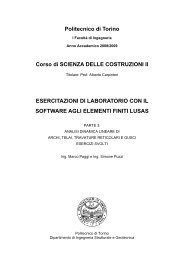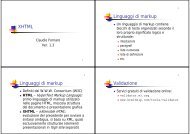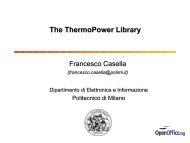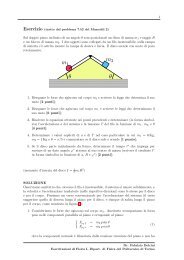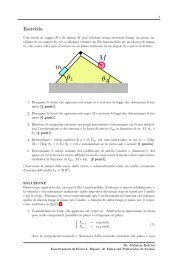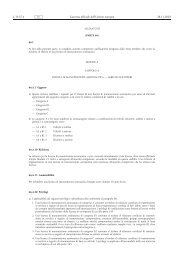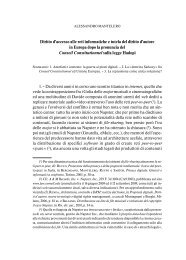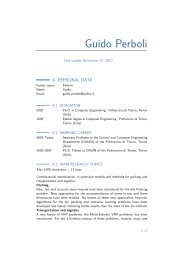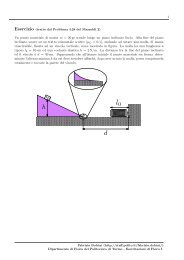The ITER toroidal field model coil project
The ITER toroidal field model coil project
The ITER toroidal field model coil project
You also want an ePaper? Increase the reach of your titles
YUMPU automatically turns print PDFs into web optimized ePapers that Google loves.
200 A. Ulbricht et al. / Fusion Engineering and Design 73 (2005) 189–327<br />
Fig. 3.10. <strong>The</strong> impregnated winding pack. <strong>The</strong> Helium outlet tubes<br />
protrude and the outer joint area is still left free.<br />
adjacent terminations and protruding into both copper<br />
soles. <strong>The</strong>se pins were electron beam welded in such<br />
a way that the bulk temperature of the terminations<br />
did not reach more than 60 ◦ C. This method has been<br />
validated with a full-size joint sample as described in<br />
Section 7.<br />
3.4.3. Ground insulation and impregnation<br />
After having provided the outer joints with welded<br />
clamps of aluminium alloy they were wrapped by<br />
the required sliding layer (Tedlar tape) and a combined<br />
glass–Kapton insulation. <strong>The</strong>n 8 mm of combined<br />
glass–Kapton insulation was built up on the<br />
whole surface in order to form the ground insulation,<br />
which was then impregnated with DGEBA epoxy resin.<br />
After impregnation and before assembly with the<br />
<strong>coil</strong> case dielectric tests (10 kV DC and ACpeak-to-peak)<br />
and flow/pressure/leak tests were performed successfully.<br />
3.4.4. Stainless steel case<br />
<strong>The</strong> case of the TFMC was made of 70–90 mm thick<br />
316LN stainless steel sheet. <strong>The</strong> thickness was defined<br />
after FE calculations for the worst load case.<br />
<strong>The</strong> pieces were MAG welded together by qualified<br />
procedures to a U-shaped structure. All welds were<br />
ultrasonically tested. Defects had to be repaired, which<br />
were unacceptable according standards for highly<br />
loaded austenitic welds.<br />
<strong>The</strong> tightly toleranced shape was obtained by<br />
machining and local heating, partially in combination<br />
with the applied force of hydraulic jacks.<br />
Fig. 3.11. <strong>The</strong> winding pack in the stainless steel case. After filling<br />
the gap between the two with silica sand the cover was placed on top<br />
and subsequently welded.<br />
<strong>The</strong> welding chamfers on top of the U-shape and<br />
on the cover plate were copy milled. A fit within a few<br />
tenth of mm was achieved.<br />
3.4.5. Winding pack/case assembly<br />
For the winding pack/case assembly, both were<br />
in reversed position (i.e., bottom up). After having<br />
brought up the glass felt layers on the bottom of the<br />
winding pack the case was put on. A special tool fixed<br />
the assembly and allowed a turn over without slipping<br />
out of place.<br />
After having the gap filled with silica sand and placing<br />
glass felt on top, the case cover was positioned on<br />
top (Fig. 3.11). <strong>The</strong> first three passes of the root were<br />
TIG welded and inspected using dye penetrant. <strong>The</strong><br />
remaining 70–90 mm deep seam was MAG welded.<br />
Ultrasonic testing on all welding seams was performed<br />
by the French Institut de Soudure. All located defects<br />
larger than those agreed had to be repaired, particularly<br />
in highly stressed areas of the case.<br />
After cover welding the case openings were sealed<br />
to make it vacuum tight for impregnation with the same<br />
type of epoxy resin and the same curing procedure, as<br />
used for the previous impregnations (see Section 3.3.7).<br />
For impregnation, the same mould was used again as a<br />
heating vessel.<br />
3.4.6. Final machining and surface finish<br />
<strong>The</strong> final machining of the interfaces and cooling<br />
channels on the outer circumference was done after



